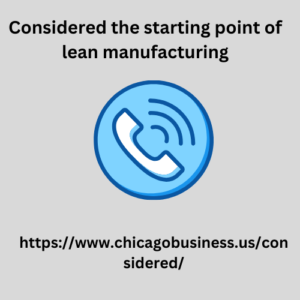Formal emails are a crucial part of professional communication. They are used for various purposes, from introducing yourself to a potential client to sending a progress report to a colleague. A well-written formal email is clear, concise, and professional, leaving a positive impression on the recipient.
This article serves as a comprehensive guide to crafting complete formal emails. We’ll explore essential elements, structure, and best practices for composing effective formal emails in various professional contexts.
Essential Elements of a Formal Email
A complete formal email typically includes the following elements:
-
Subject Line: A clear and concise subject line that accurately reflects the email’s content. It should grab the recipient’s attention and encourage them to open the email.
-
Salutation: A formal greeting Considered the starting point of lean manufacturing addressing the recipient by name and title (e.g., Dear Mr. Smith, Dear Ms. Jones). If unsure of the recipient’s title, “Dear Sir or Madam” is a safe alternative.
-
Introduction: Briefly introduce yourself and the purpose of your email. State the reason you’re contacting the recipient and any relevant context.
-
Body: This is the core of your email, where you convey your message.
- Clarity and Concision: Use clear and concise language. Avoid jargon or overly complex sentences.
- Professional Tone: Maintain a professional tone throughout the email. Avoid humor or informal language.
- Bullet Points (Optional): Utilize bullet points to improve readability and highlight key points.
- Formatting: Maintain proper formatting for easy reading. Use short paragraphs and white space effectively.
-
Call to Action: If you require a response or action from the recipient, clearly state your request. Be specific and polite in your request.
-
Closing: End your email with a formal closing phrase (e.g., Sincerely, Respectfully yours).
-
Signature: Include your signature block with your name, title, company name (if applicable), and contact information.
Structuring a Formal Email for Different Purposes
While the core elements remain consistent, the structure of your email can vary depending on the purpose:
-
Introducing Yourself: Briefly introduce yourself, your company or affiliation, and your reason for contacting the recipient. State your desired outcome clearly (e.g., requesting a meeting, seeking information).
-
Following Up: Briefly mention the previous communication and your reason for following up. Be polite and avoid sounding demanding.
-
Requesting Information: Explain the nature of your request and the specific information you need. Be clear and specific about your needs.
-
Sending a Report or Document: Briefly summarize the document and its purpose. Highlight key points if necessary. Attach the document in a compatible format.
-
Delivering Bad News: Clearly state the bad news at the beginning. Be empathetic and apologetic in your tone. Offer solutions or alternatives if possible.
Best Practices for Composing Formal Emails
Here are some additional tips for crafting effective formal emails:
-
Proofread Carefully: Proofread your email meticulously before sending it. Typos and grammatical errors can damage your professional image.
-
Use a Professional Email Address: Avoid using nicknames or unprofessional email addresses. Opt for an email address that reflects your name and company (e.g., [firstname.lastname]@[company.com]).
-
Respond Promptly: Aim to respond How to request a read receipt in Outlook to emails within a reasonable timeframe, demonstrating professionalism and respect for the recipient’s time.
-
Use BCC Cautiously: The BCC (blind carbon copy) field should be used sparingly in formal communication. Only use it when necessary to protect the privacy of individuals who don’t need to see each other’s email addresses.
-
Consider Tone and Audience: Tailor the tone of your email to your audience and the context. Use a more formal tone for communication with senior management or external contacts.
Examples of Formal Email Openings and Closings:
Openings:
- Dear Mr./Ms. [Last Name],
- Dear [Recipient Title] [Last Name], (if you know their title)
Closings:
- Sincerely,
- Respectfully yours,
- Thank you for your time and consideration,
Conclusion
Formal emails are an essential tool for professional communication. By following the elements, structure, and best practices outlined in this guide, you can craft complete and effective formal emails that leave a positive impression on the recipient. Remember, clear communication, professional tone, and a well-structured message ensure your emails are received and understood effectively.
